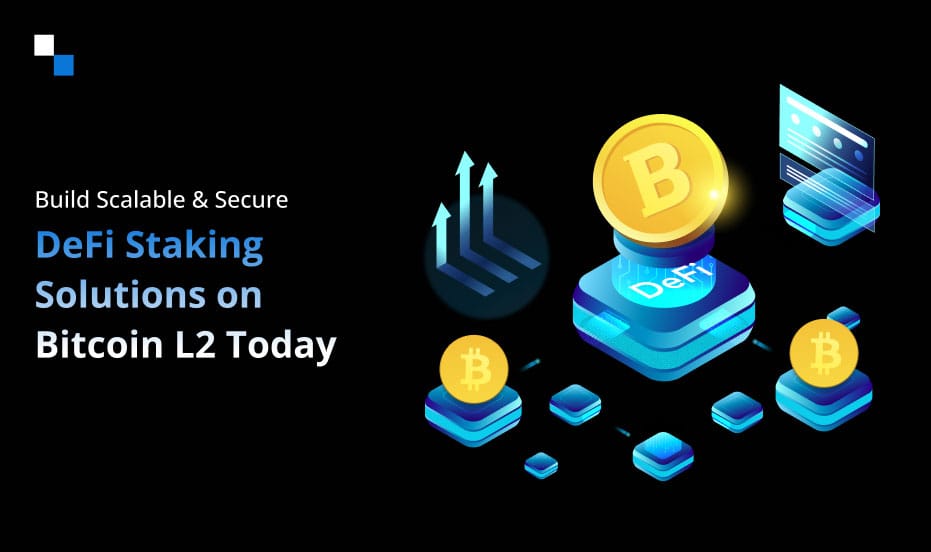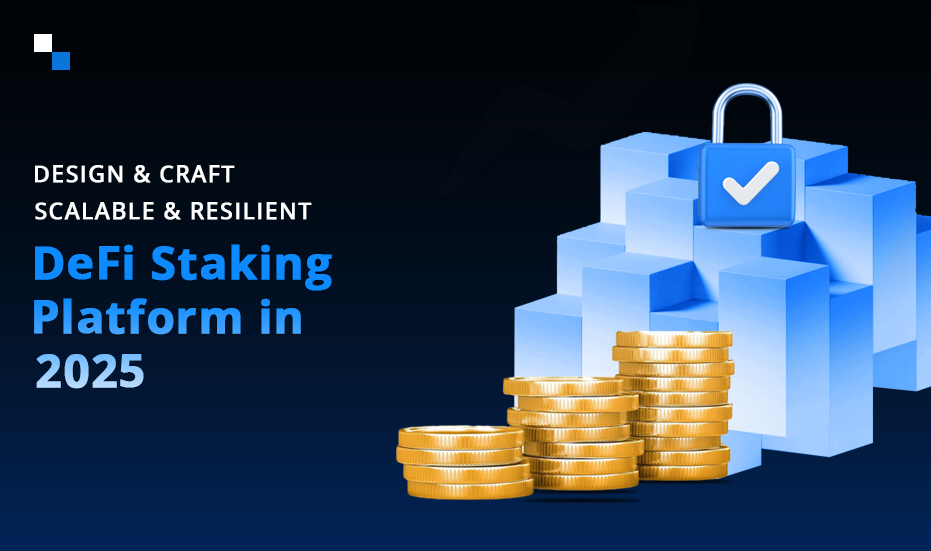Decentralized Finance (DeFi) applications are a key advancement in Blockchain technology. It is like a group of financial products that optimize smart contracts and blockchain for peer-to-peer (P2P) transactions. Understanding how broad concepts of DeFi Swapping platform development and how they function is the greatest way to grasp the idea of what’s in store for us. DeFi redefines traditional financial services by dismantling the role of intermediaries, and effective stablecoin trading, offering decentralized, permissionless services like lending, trading, investment, payment, yield farming, and much more.
DeFi swapping platform development is not a new thing! It has been used as a collective term for all DeFi activities that needed assurance of crypto assets. DeFi swapping is a technique for earning unlimited rewards by locking crypto assets in your wallet for a predetermined amount of time. This process validates blockchain transactions and enhances the security and speed of the network so that users can earn rewards in the form of extra coins. DeFi platform development services pay interest on investment and governance tokens to provide great incentives to crypto owners. Overall, the process can be defined as taking on the responsibilities in a DeFi protocol for receiving compensation.
Getting To Know The Basics Of DeFi Swapping Platform Development
Now that DeFi Swap is in operation, DeFi Coin should naturally experience higher demand for services such as swapping and staking.
DeFi swapping platform development is at the forefront of crypto-economics. Crypto enthusiasts get the chance to profit greatly by staking cryptocurrency assets in the form of tokens. These assets can be, in turn, used to access specific services and get superior returns. DeFi swapping platform development services may assist in creating a DeFi platform with the functions and add-on features that can be most effective for a firm. This outstanding emerging decentralized finance (DeFi) idea gives cryptocurrency investors access to vast opportunities for financial success. DeFi world is the industry leader in financial crypto innovation that enables users to earn profits from crypto holdings and earn passive income through a decentralized environment. Staking, lending, and yield farming are now popular practices in the DeFi industry. You have to examine how it functions and learn the advantages or risks to get a novel idea of the industry.
An active user can easily swap money with others via automated smart contracts. Similarly, you can also receive payment in the form of digital assets. It may seem straightforward, but they constantly move money across loan marketplaces with sophisticated tactics for maximum profit. So let’s explore the process in detail to learn how it functions!
Types Of Methods To Transform Assets
#1 Staking
Utilizing crypto assets as collateral for blockchain networks is a practice called staking. It is based on the PoS (Proof of Stake) consensus process, which is similar to how mining enables consensus in the PoW (Proof of Work) blockchain network. The DeFi staking platforms are used to confirm transactions on Proof-of-Stake (PoS) blockchains. This is why PoS is preferred because it can be scaled better and ultimately consume less energy than PoW.
As a result, the DeFi swapping platform development services will reward you more for staking when you have a larger stake. The block of a cryptocurrency is validated when the user receives new tokens of currency. It is a practical method of reaching a consensus as compared to others. Without expensive machinery, DeFi staking platform development can further improve the convenience of the procedure.
The Risks of Staking
However, staking platforms have lower risk elements when it comes to passive assets. Protocols and staked tokens are given complete security. The risk associated with the Proof-of-Stake procedure is a significant aspect to consider while deciding the number of coins to stake. It’s intriguing to think about the fact that DeFi platforms may have more risk than staking investment strategies. The security, slashing, volatility, and servers of the platform are clearly correlated with some risks. You have to overcome issues like financial theft or loss, project failure, prolonged lock-up times, liquidity hazards, waiting periods for incentives, minimal holding requirements, and much more.
Is it worth your investment?
First off, staking is a terrific method of increasing your earnings where interest rates are also high. In fact, you can make more than 20% annually in some cases. Concluding, it is a very successful investment tactic for both the blockchain and the cryptocurrency you are investing in. Remember, the proof-of-stake cryptographic paradigm is essential.
#2 Lending
Without lending liquid assets, no DeFi project would exist. The main objective of DeFi lending platform development is to give the DeFi protocol liquidity. Users add their digital assets in this investing strategy for pairs like ETH/USDT to get DeFi protocols’ liquidity pool. The trading pair is offered due to Liquidity Provider Token (LP), which is applied for the ultimate atonement. Users are rewarded native tokens that are mined in every block or they have earned while the tokens are still in the liquidity pool. DeFi lending and borrowing platform development offer rewards based on the liquidity they contribute to the pool.
Lending is quite different from other cryptocurrency investment strategies. Investors would be compensated by the protocol of assets they invested in the liquidity pool only. Newly issued tokens could give users access to governance, and they can trade them for better rewards.
The Risks of Lending
A user must be aware of the hazards, whether they are associated with staking, yield farming, or lending. Liquidity mining has some cons, such as potential project risks, temporary loss, risks associated with smart contracts, and many more. Liquidity miners are usually vulnerable to the rug pull effect, which makes them weak. DeFi lending and borrowing platform development should be held with the right approach for maximum security.
Is it worth your investment?
Although liquidity lending and borrowing is a relatively new method of investing in crypto assets but will be continued for a long time, Investing can be dangerous or safe as well. With liquidity mining, your returns are always tied to the amount of risk you are handling in your investment. Well, the ease of starting this investment strategy for beginners is much appreciated. If you’re seeking an investment plan that will work for you, DeFi lending platform development services won’t let you have any trouble getting started.

#3 Yield farming
Yield farming is basically the process of providing liquidity to DeFi protocols, similar to the borrowing and lending services mentioned above. However, a portion of transaction fees is awarded to the yield farmer in the form of interest. DeFi platform development services play a big role in this. Automated DeFi systems, such as decentralized exchanges (DEXs), are backed up by smart contracts. They usually trade cryptocurrency (AMMs), where money is deposited into a liquidity pool by users. As a result, they can carry out automatic trading just with AMMs. The rewards are given in the form of tokens from liquidity providers. Further, yield farmers can lend and borrow assets from yield farming pools at frequently enticing interest rates.
The Risks of Yield farming
Clearly, Yield farming has advantages but, at the same time some disadvantages as well. Liquidity danger arises whenever the value of your collateral increases or decreases. Suppose a user successfully used YF techniques and got a sizable amount on the service. Now the coin’s market price has decreased, which means the person will; suffer a loss. But if the value of the collateral falls, the DeFi platform will kick the borrower off before they pay off their obligation. Developers also have authority over your currency which means you are at risk with your liquidity. Arbitrage trading is comparing different exchanges, but arbitrage trading is no longer considered profitable when volatility decreases.
Is it worth your investment?
There are plenty of justifications for choosing yield farming as a potential area of investment. The process is likely to develop into a productive market soon in the future with high return rates for conventional approaches. Soon it is expected to have a greater demand for financial services. Therefore, if you intend to participate actively in digital assets for better profits, you can enter yield farming but you have to dive deeper into this area.
Conclusion
DeFi is transforming and growing every day to match the standards of the traditional finance industry. Undoubtedly, this ecosystem is going to have a big impact on the operations of centralized financial institutions in the future as well.
The investors are given a new revenue stream to revolutionize finance in such ways that were never imagined before. DeFi staking platform development aims to fade away the intermediaries in financial transactions. The set of financial services that operate on open blockchains is getting more opportunities to work on every day. As evident, the easiest way to generate passive income while advancing your profile is through the DeFi staking platform. The assets can be used as investments, lent, borrowed, or traded for interest. Bear in mind that cryptocurrency prices are incredibly unstable, and hence you have to research deeply before putting money.
Antier offers DeFi swapping platform development services to help you build a profitable portfolio. The majority of DeFi projects built on Ethereum find a way to expand. Antier focuses on sustainability, scalability, and security while maintaining the decentralized nature of the platform. You can get in touch with our subject matter expert to learn more about DeFi lending and borrowing platform development.





